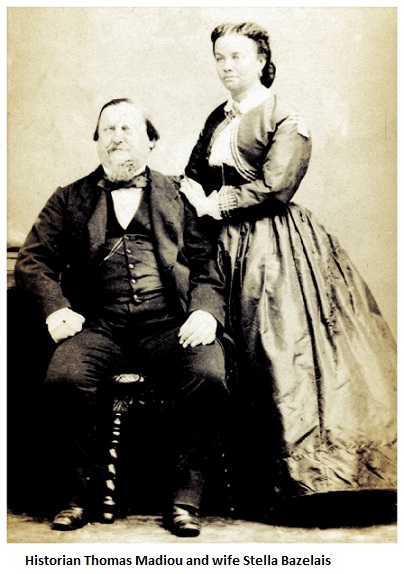Angeline Jean-Pierre
CSMS Magazine
Antoine Bernard Thomas Madiou, born on April 30, 1814, in Port-au-Prince, came from a wealthy Haitian family. His grandfather, Jean Madiou, was a French army lieutenant colonel in Saint-Domingue, and his father, Jean-Marie Madiou, served as a colonel and later as a pharmacist under President Alexandre Pétion. Thomas’s mother, Marie-Antoinette de Laître, was of Amerindian origin. After her death, his father remarried a niece of President Jean-Pierre Boyer.
In 1824, at age ten, Thomas was sent to France for his studies, attending the Royal College of Angers, and later earning a bachelor’s degree in Rennes. A meeting with Isaac Louverture in 1835 inspired him to return to Haiti to help build the young Republic’s institutions. Upon his return, Madiou married Stella Bazelais and held several high-ranking roles in the Haitian government.
Madiou had a long political career as well. Thomas Madiou’s political career began soon after his return to Haiti, when he became the private secretary to General Inginac, a key figure in Jean-Pierre Boyer’s government. He later held several important positions, including director of the National High School, director of Le Moniteur Haïtien, and record keeper for Emperor Faustin Soulouque. After the empire fell, Madiou served as plenipotentiary minister to Spain and later as chief of staff to President Fabre Geffrard. He became a senator in 1866 and Secretary of State for Public Instruction and Worship until Geffrard’s fall in 1867. Following a brief hiatus, Madiou held key roles in Nissage Saget’s and Michel Domingue’s governments. He died in Port-au-Prince on May 25, 1884 at the age of 70.
It is worth noted that Thomas Madiou’s Histoire d’Haïti remains a landmark work in Haitian historiography, both in scope and depth. Though unfinished at his death, this eight-volume, 4,000-page opus aimed to provide an exhaustive account of Haiti’s history, offering military, political, administrative, economic, and ethnographic insights spanning over 350 years. Madiou published the first three volumes during his lifetime, with volumes I and II in 1847, and volume III in 1848. He structured the work into volumes further divided into “books,” each covering a specific period based on the available information. For instance, volume I, covering 1492 to 1799, consists of 17 books, with the first two spanning several centuries and the rest focusing on individual years.
Also see: Madiou’s famous quote


